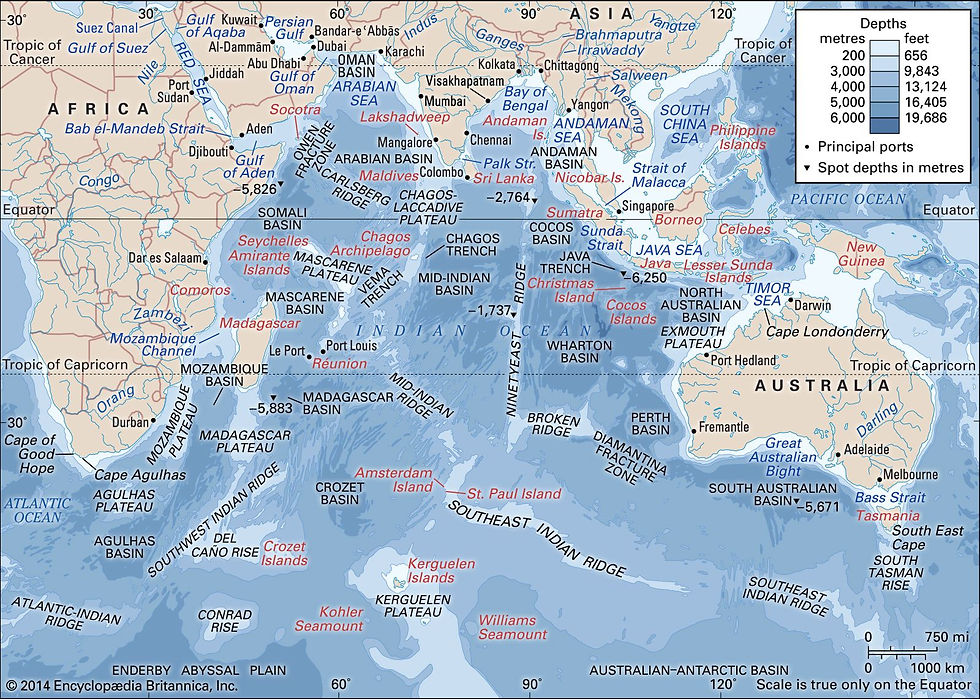The Indian Ocean: A Warming Giant with an Outsized Influence
The Indian Ocean's Growing Importance
The Indian Ocean is the world's smallest ocean by surface area but is critical for understanding global climate change due to its rapid warming.
Home to Deadly Storms
The Indian Ocean experiences dramatic monsoon winds and cyclones, particularly in the North Indian Ocean.
These cyclones are less frequent than in other oceans but can be very deadly due to the region's population density.
A Rich Ecosystem
The warm waters support diverse marine life, including fish species like tuna and mackerel.
The Indian Ocean also boasts tourist attractions like beaches and coral reefs.
The warm ocean supports fisheries, big and small, and fish such as anchovies, mackerel, sardines, and tuna.
Dolphins are a tourist attraction; some whales have also been sighted in the Arabian Sea.
Tourists also flock to popular beaches and the corals from Lakshadweep to the Andaman-Nicobar Islands, all the way down to Reunion Island off Madagascar.
Unique Configuration
The Indian Ocean is bordered by Asia to the north and connects to the Pacific and Southern Oceans through underwater tunnels.
This unique configuration influences water circulation, temperature, and salinity.
The Indian Ocean's Role in Global Warming
The Indian Ocean is warming rapidly, impacting heatwaves and extreme rain in the Indian subcontinent.
This warming also affects Pacific Ocean circulation and its ability to absorb heat, influencing global warming rates.
The Indian Ocean plays a role in regulating global warming by facilitating the transfer of heat to deeper waters.
Why the Indian Ocean is a Warming Bathtub
Warm Despite Underwater Tunnels
The Indian Ocean stays warm even though underwater tunnels exist. This is because the Pacific Ocean heavily influences it through atmospheric circulation.
Atmospheric Bridge Delivers Warmth
Air circulation creates a massive rainfall center over the Maritime Continent, leading to mostly sinking air over the Indian Ocean. This air circulation also warms the ocean year-round.
Heat Gain and Release
The Indian Ocean gains heat and releases it by its waters moving south. However, with global warming:
The Pacific Ocean dumps extra heat.
Colder water from the Southern Ocean is not as cold as before.
Consequences of Warming
These factors make the Indian Ocean one of the fastest-warming oceans, leading to:
Increased heat waves
Extreme rain over the Indian subcontinent
Marine heat waves threatening coral reefs and fisheries
A Hand in Human Evolution
Geological changes in the Indian Ocean millions of years ago may have influenced human evolution in Africa.
The separation of the Indian and Pacific Oceans is thought to have contributed to the aridification of East Africa,potentially leading to bipedalism in our ancestors.
Worth Celebrating and Studying
The Indian Ocean's unique features and significant influence on global climate and potentially even human evolution make it a fascinating body of water worthy of continued study and celebration.

Comments